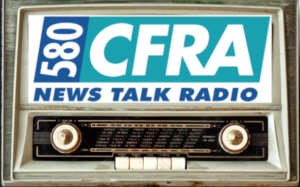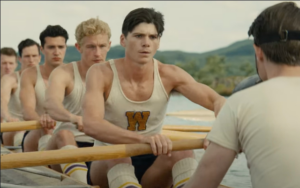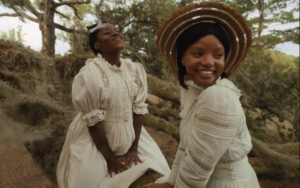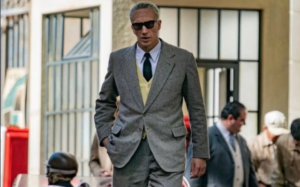BNN: RICHARD LOOKS BACK AT THE YEAR THAT WAS IN POPULAR CULTURE!
 I join BNN host Paul Bagnell to have a look at the biug business stories from the world of entertainment in 2023.
I join BNN host Paul Bagnell to have a look at the biug business stories from the world of entertainment in 2023.
Watch the whole thing HERE!
 I join BNN host Paul Bagnell to have a look at the biug business stories from the world of entertainment in 2023.
I join BNN host Paul Bagnell to have a look at the biug business stories from the world of entertainment in 2023.
Watch the whole thing HERE!
 I join CTV NewsChannel anchor Roger Peterson to talk about the musical “The Color Purple,” the zippy “Ferrari” and the drama “The Boys in the Boat.”
I join CTV NewsChannel anchor Roger Peterson to talk about the musical “The Color Purple,” the zippy “Ferrari” and the drama “The Boys in the Boat.”
Watch the whole thing HERE!
 I sit in on the CFRA Ottawa morning show with guest host Andrew Pinsent to talk the new movies coming to theatres including the musical “The Color Purple,” the zippy “Ferrari” and the drama “The Boys in the Boat.”
I sit in on the CFRA Ottawa morning show with guest host Andrew Pinsent to talk the new movies coming to theatres including the musical “The Color Purple,” the zippy “Ferrari” and the drama “The Boys in the Boat.”
Listen to the whole thing HERE!
 I join Moore in the Morning guest host Jason Agnew and panelists Vass Bednar and Anne Marie AStkins to talk aboput some of the biog pop culture stories of the year.
I join Moore in the Morning guest host Jason Agnew and panelists Vass Bednar and Anne Marie AStkins to talk aboput some of the biog pop culture stories of the year.
Listen to the whole thing HERE! (Starts at 26:07)
 There are underdog sports movies, and then there is “The Boys in the Boat,” the new film from director George Clooney, now playing in theatres. Set during the Great Depression, the characters in this film fight expectations and fascism.
There are underdog sports movies, and then there is “The Boys in the Boat,” the new film from director George Clooney, now playing in theatres. Set during the Great Depression, the characters in this film fight expectations and fascism.
Based upon Daniel James Brown’s book of the same name, “The Boys in the Boat” centers on Joe Rantz (Callum Turner), a struggling University of Washington student who, unable to pay the balance of his tuition for the semester, signs up for the school’s rowing team because it comes with a part-time job and a place to live.
“The depression hit everyone hard,” he says. “No jobs. No food. We were broke.”
Under the tutelage of coach Al Ulbrickson (Joel Edgerton) and boatbuilder George Pocock (Peter Guinness), Rantz and the Washington Huskies, his team of inexperienced, working-class student rowers, are pitted against the richest schools in the country.
“We rowed out of need,” Rantz says. “The need to stay in school. The need to eat. To sleep.”
Through need and determination, the Huskies earned a run at the gold at the 1936’s Nazi-overseen Berlin Olympics.
“They said we couldn’t compete with the richest schools in the nation,” Rantz says. “They said we couldn’t beat the Germans. But they didn’t understand who we were.”
An old-fashioned story of grit and perseverance, “The Boys on the Boat” is a mix of stoicism and sports. Of course, the sport is simply the vessel by which the characters glide through the story. The movie spends a fair amount of time on the water, but rowing is secondary to the rush of inspiration that fuels the story. It’s a story of team work, of young men coming together to overcome not only the economic hardships of their lives and illness on the eve of their big row, but also the Nazis.
Unfortunately, the movie also attempts to play tug-a-rope with your heartstrings. It works its way through to the inevitable happy ending with crowd-pleasing beats that will seem very familiar to anyone with a knowledge of 1990s era sports flicks.
Still, it is a handsomely mounted movie with several intense competition scenes that will set your pulse racing, even if the overly sentimental presentation doesn’t.
 The glitzy new musical version of “The Color Purple” maintains the talking points of Alice Walker’s Pulitzer Prize-winning novel and Stephen Spielberg’s Oscar-nominated film adaptation, but adds in a touch of old Hollywood glamor and rousing gospel, blues and jazz songs.
The glitzy new musical version of “The Color Purple” maintains the talking points of Alice Walker’s Pulitzer Prize-winning novel and Stephen Spielberg’s Oscar-nominated film adaptation, but adds in a touch of old Hollywood glamor and rousing gospel, blues and jazz songs.
Set in Jim Crow era rural Georgia, Fantasia Barrino reprises her role from the Broadway stage to play Celie Harris, a timid young woman whose life is marred abuse and separation from loved ones. Impregnated by her father when she was just a teen, her baby is given away. Later, when she is shipped off to live with the abusive Albert Johnson (Colman Domingo), a man she is forced to call “Mister,” she is disconnected from her beloved sister Nettie (Ciara).
The cruel and overbearing Mister tells his terrified wife she’ll never see her sister again and blocks any communication between the two. “Whatever I say, go,” he tells her.
Isolated from everything she has ever known, she perseveres through strength of will, the power of imagination and the friendship of the indomitable Sofia (Danielle Brooks) and flamboyant blues chanteuse Shug Avery (Taraji P. Henson).
Reimagined as a period drama with a healthy dose of magic realism, the new “The Color Purple” is a journey of self-discovery and triumph over adversity as Celie opts to take agency over her life and not be a docile victim. Despite her trauma, she has an eye to the future, hope and, above all, resilience.
Barrino plays Celie as soft-spoken, allowing the songs, like the moving “Superpower,” to stand out, fuelled by cathartic, powerhouse performances. The role is a weighty one, a stand-in for the evolution of many marginalized people, but this version of “The Color Purple” is an emotional Broadway-style crowd pleaser that turns Celie’s ordeal into a journey of empowerment.
The addition of musical weaves joy into the story.
Director Blitz Bazawule allows Celie’s flights of imagination to temper the story’s built-in oppressive tone. The film’s opening scene, featuring Mister playing banjo, while his horse’s hoof clomps keep time, is subtle, while a scene in which Shug, (a terrific Henson), takes Celie to the movies, becomes a luscious Art Deco fantasy reimagination of the song “What About Love?” It is lavish and lovely.
In terms of staging, one show stopping scene sees Celie sing to Shug while perched atop of spinning gramophone record. It’s a blast of old-school Hollywood glamour that cleverly demonstrates Celie’s use of imagination as a coping mechanism.
This isn’t the “The Color Purple” of old. Boldly stylized, it embraces humor, music, imagination and leaves some space for Mister’s redemption and a slightly more explicit depiction of the relationship between Celie and Shug than in the previous film version. More than anything, though, it is a tuneful, joyful journey from powerless to empowered, from heartbroken to healed that is sure to entertain and inspire in equal measure.
 “Ferrari,” director Michael Mann’s long gestating look at the summer of 1957 and the existential crisis that plagued Italian motor racing pioneer Enzo Ferrari, both personally and professionally, goes flat out, even when it isn’t on the racetrack.
“Ferrari,” director Michael Mann’s long gestating look at the summer of 1957 and the existential crisis that plagued Italian motor racing pioneer Enzo Ferrari, both personally and professionally, goes flat out, even when it isn’t on the racetrack.
When we first meet Ferrari (Adam Driver) he is a cultural hero in Italy, but his company and marriage are falling apart. His advisors tell him he must take on a partner, like Ford or Fiat, and
Increase his consumer car sales by four times if he hopes to stay afloat. Trouble is, Ferrari wants complete control of his company, and that means no partner and concentrating on race cars, not street vehicles.
At home, his infidelity pushes his wife Laura (Penélope Cruz) to extremes. She doesn’t care if he sleeps around, just so long as nobody knows about it. When he arrives home after the maid has served coffee, Laura expresses her displeasure by taking a potshot at him with a gun she carries for protection. That is, unfortunately, the extent of the passion left in the marriage.
Unbeknownst to Laura, who is grieving the loss of their young son, Enzo has a long-term relationship, and has fathered a son, with Lina Lardi (Shailene Woodley), a woman he met, and fell in love with, during the war. As their son’s baptism approaches, Lina wants to know if the child will carry the name Ferrari, but Enzo has other things on his mind, like the imminent collapse of his company.
His financial advisor Giacomo Cuoghi (Giuseppe Bonifati) suggests entering the grueling, 1000-mile open road race, the Mille Miglia. A win would establish Ferrari supreme over their main rival Maserati, and hopefully encourage sales. “Win the Mille Miglia, Enzo,” Cuoghi says. “Or you are out of business.”
Working from a script by Troy Kennedy Martin, who wrote 1969s “The Italian Job,” Mann’s film feels like two movies on one. On one hand there’s the drama with Laura, Lina and the company. On the other is a piercing look at the dangerous world of racing, circa 1957. “It is our deadly passion,” Enzo tells racers Alfonso de Portago (Gabriel Leone), Peter Collins (Jack O’Connell), and Piero Taruffi (Patrick Dempsey). “Our terrible joy.”
The racing scenes are exciting, shot with verve and style, with a couple of unexpected turns (literally) that vividly capture the dangers of racing. But the racing scenes feel conventional when stacked up against the more complex portraits of Enzo and Laura.
Driver plays Enzo as a charismatic man of action, a physically imposing person haunted by the voices of those who have gone before him, his father, his son and racing colleagues taken too soon. It reveals a rich inner life hidden by his stolid façade. Driver doles out Ferrari’s personality in dribs and drabs; the contented lover with Lina, the hard driving boss with his racers and the stoic husband no longer in love with his wife. All aspects of this performance come packaged in the form of a man treated like a deity—a priest even refers to him as a “god”—but prone to real world failings. Driver captures the public and personal to create a complex portrait of a man driven by a variety of forces.
He is at his best when opposite Cruz. Laura is a supporting character in the story over-all, but her agony/rage for a loveless marriage, a son she was powerless to save and a company she co-founded but is unable to have a say in, is palpable.
You can’t make a movie about Enzo Ferrari and not include racing, particularly the career defining Mille Miglia, but Mann wisely keeps the focus on the interpersonal. “Ferrari” has race scenes, several very effective ones, but the memorable moments happen when Driver and Cruz put the pedal to the emotional metal.
 I join CP24 at Noon anchor Leena Latafat to have a look at the life and legacy of the late South Korean actor Lee Sun-kyun.
I join CP24 at Noon anchor Leena Latafat to have a look at the life and legacy of the late South Korean actor Lee Sun-kyun.
Watch the whole thing HERE.
 I join CTV NewsChannel anchor Roger Peterson to have a look at the life and legacy of the late South Korean actor Lee Sun-kyun.
I join CTV NewsChannel anchor Roger Peterson to have a look at the life and legacy of the late South Korean actor Lee Sun-kyun.
Watch the whole thing HERE!